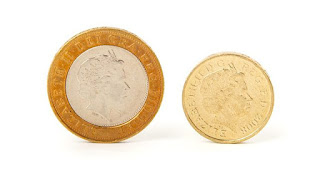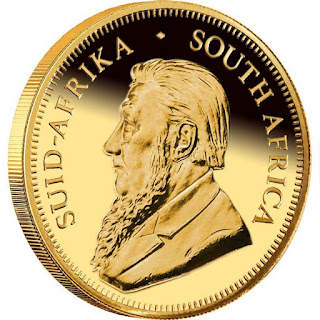Metals Used in Modern British Coins
We handle coins on practically a regular schedule. We talk about their value, and gatherers like us examine their plans exhaustively. However, except if the coin is some valuable metal we seldom examine what metals make up the coin and why they were utilized. So I figured I would.
Would we be able to utilize any metal?
As a matter of fact, no. We need to recall that coins are the physical and viable appearance of cash. We handle them, store them and trade them on an exceptionally customary premise. So coins should have some central properties
Coins should be protected to contact.
We can't have radioactive coins or produced using material that would be harmful to people.
Coins should be sturdy.
We might want coins to have a long existence of 30 years of something else. The metal utilized should be genuinely hard wearing and not break down because of the consistent treatment of people or from the climate. Coins that would rust rapidly are no utilization to us. So the metal requirements to have high wear obstruction and hostile to destructive properties.
Coins should be not difficult to fabricate.
We really want to have many (at least millions) of coins available for use. We should have the option to utilized productive cycles to fabricate this number. We use stepping and squeezing so the metal should be delicate enough for use to utilize bites the dust to do this.
The worth of the metal should be not exactly the assumed worth of the coin.
Assuming that we made pennies utilizing gold they would vanish to the smelters as quick as they were printed and the nation would be bankrupt!
It's not generally clear as you might suspect, as conditions change with time. Pre-1992 British pennies were 97% copper with 2.5% Zinc in addition to 0.5% tin, a compound known as Bronze. After twenty years this implied there was 1.5 pence of copper in every penny.
So the scope of metals appropriate is restricted and by and large composites of at least one metals are utilized.
Coin metals have changed throughout the long term
To forestall the penny issue depicted above, from 1992 the British penny is really copper-plated steel, comprising of 94% steel and just 6% copper.
America had a comparative issue. Pennies were produced using copper (besides during the War years when copper turned out to be scant) however these days pennies are copper plated zinc.
Silver was a famous material for flowing coins from early days. In Britain before 1921 silver coins (like shillings, florins, halfcrowns) were 92.5% unadulterated silver (real silver, the rest normally copper). This became half silver and by 1947 there was no genuine silver in "silver" coins.
Cupronickel (75% copper, 25% nickel) turned into the famous decision to supplant silver. Cupronickel is sparkling like silver and profoundly impervious to erosion in seawater. Notwithstanding, by 2011 the copper cost was adequate to move the lower section silver coins (5p, 10p) to utilize nickel-plated steel (94% steel, 6% nickel).
50 pence pieces are still Cupronickel (75% copper, 25% nickel), as are £5 coins (which supplanted the 25p crown in 1990). For reasons unknown, 20 pence coins are called Cupronickel yet have an alternate proportion of 84% copper, 16% nickel.
As coins last significantly longer than banknotes, the One-Pound note was supplanted with a one-pound roundabout coin presented in 1984. To give it a gold-like shading the compound was 70% copper, 24.5% zinc and 5.5% nickel.
Bi-metallic Coins
Bi-metallic Coins have been around for quite a while yet not in the UK. There was a tin farthing with a copper plug in 1692 yet for most purposes the £2 coin was a first.
The Two Pound (£2) coin is a bimetallic coin presented in 1998 (albeit the first are dated 1997). The external circle is Nickel-Brass (76% Copper, 20% Zinc, 4% Nickel) and the internal ring is Cupronickel (75% copper, 25% nickel).
Having various materials for external and internal circle implies that the external circle can be more enthusiastically then the inward circle, giving assurance to the coin. It additionally makes the coin more hard to copy as falsifying is an everlasting issue with flowing money.
Sadly, coins are a lot more straightforward to produce than banknotes. By 2014 it was assessed that 3% of the round pound coins were fake and the Royal Mint updated the one-pound into a 12-sided bi-metallic coin with many underlying security highlights.
The enhanced one-pound coin was dispatched in 2017. The external ring is gold shaded nickel-metal (76% Copper, 20% Zinc, and 4% Nickel) and the inward ring is a silver hued nickel-plated combination. The Royal Mint struck 300 million of them!
Valuable Metal Bullion and Proof Coins
UK gold coins are essentially the gold Sovereign and the gold Britannia and their families.
A long time back the sovereign was a functioning coin that was regularly dealt with and as gold is an extremely delicate metal copper was added to make the coin harder and more impervious to wear. The gold sovereign is 22 carat, which is 91.67% gold as in the conventional proportion of 11/12ths gold, 1/twelfth copper.
Nowadays bullion coins are just daintily taken care of and verification forms are never contacted, so the UK has gone with the pattern and the gold Britannia is printed in 999.9 gold (99.99%).
Silver Britannia's are 999 silver. The Royal Mint likewise utilizes Platinum for certain coins at 0.9995 norm.
Some Silver coins are gold plated. The Alloy of gold and silver is called Electrum.




Komentar
Posting Komentar